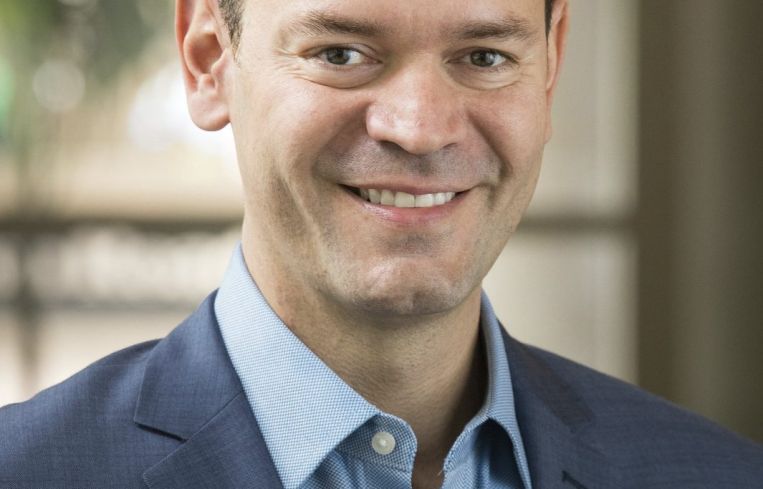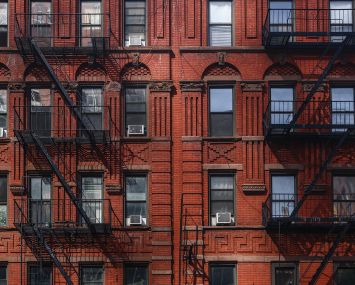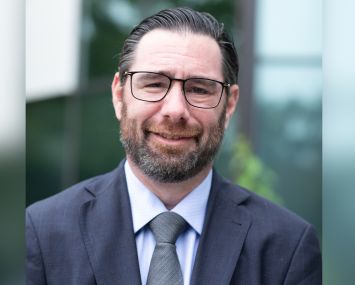Healthy Buildings: Q&A With Clark Construction’s Fernando Arias
By Keith Loria December 2, 2019 6:36 pm
reprints
As Clark Construction’s director of sustainability, Fernando Arias and his team are rethinking and reimagining ways to incorporate sustainability into new construction and renovation projects.
Clark is a $5 billion company with projects located across the country, owned by a wide range of public and private sector clients in civil, commercial and residential areas. It has built 478 sustainable building projects, with 295 of them in the mid-Atlantic region — many of them around Washington, D.C.
Part of Arias’ job is helping to retrofit buildings with energy-saving measures to comply with D.C.’s new Building Energy Performance Standards (BEPS) resulting from the Clean Energy D.C. Omnibus Act of 2018. The policy requires that all buildings in the District reduce energy usage by 20 percent between 2023 and 2026.
He was also recently appointed by Mayor Muriel Bowser to the D.C. Green Building Advisory Council to inform city agencies on industry best practices concerning sustainability.
Arias proudly served in the United States Army beginning in 1992 through 1995, and went on to serve in the U.S. Navy Reserves from 1998 to 2000. He then graduated with a Bachelor’s degree from the Southern California Institute of Architecture, and has practiced architecture for seven years in New York City and Los Angeles.
He also holds two master’s degrees from Columbia University, one in architecture and urban design and the other in public administration with a focus on environmental science and policy.
CO spoke to Arias about Clark’s commitment to sustainability, projects ranging from The Wharf to the Virginia Avenue tunnel reconstruction, and creating a “healthy” office property.
Commercial Observer: What are your main responsibilities as Clark’s director of sustainability?
Fernando Arias: I work with the company’s leadership to shape Clark’s national sustainability approach. This includes developing and implementing sustainable policies and procedures for our national operations, green building training and oversight of our green building construction operations.
Talk a little about your background and how that prepared you for this role.
Before joining Clark, I consulted for Accenture’s Resources Group and managed strategic relationships at the Clinton Global Initiative. These career experiences taught me that “operationalizing” a strategy requires critical attention to detail and sustained commitment to delivering quality results, which is what attracted me to the opportunity at Clark.
What keeps you interested in the position?
Building on my nearly three-year tenure at Clark so far, what continues to interest me about the director of sustainability role is the opportunity to work with teams through the implementation and execution of our clients’ green building strategies across multiple project types: airports, sports arenas, hotels, museums, mixed-use developments, academic campuses — just to name a few of our more than 450 green building project types, completed or under construction since 1996. Understanding the outcomes of sustainable design strategies informs my presentation of these results to our clients, who are eager to understand the costs and impacts of the variety of options they have in creating more sustainable, livable buildings and communities.
What are some notable projects that you are proud of?
At the Virginia Avenue tunnel reconstruction project that we completed at the end of 2018, we incorporated several different green initiatives that included porous concrete sidewalks, permeable asphalt parking lanes, and the construction of a new bike path for the neighborhood. The project team also processed and recycled demolition debris on-site to be used as backfill. This resourceful approach led to significant waste reduction and hauling that would have been required to transport the material off-site. By re-utilizing the demolished and crushed portion of the old tunnel as backfill for the new tunnel, the project team reduced the need to extract and bring in fill from other sites by more than 60,000 cubic yards.
The Little Patuxent Water Reclamation Plant, which serves 56 percent of Howard County residents, has some unique sustainability efforts happening. Our project there involves upgrading the facility’s Dewatering and Drying Building. When the project is over, the facility will produce 85 percent fewer biosolids and will utilize biogas for energy — allowing for biosolids land application costs to be lowered by $2 million annually. The upgrades will also ensure that the biosolids leaving the Little Patuxent facility will be of high enough quality to be used as fertilizer by local farmland.
City Market at O is also an excellent example of a renovation project that included sustainability efforts. The project was designed to utilize green materials and incorporated green roofs, an irrigation cistern and efficient HVAC systems into the final design.
How about new buildings? What are the trends you are incorporating?
Similar to renovation or repositioning projects, there isn’t a one-size-fits-all approach to incorporating sustainability into new building projects. However, a significant emerging trend we’re dialing into now is evaluating the procurement options for lower carbon-intensive materials and helping our clients quantify the embodied carbon intensity of their projects, as they look toward differentiating their portfolios with these types of buildings. carbon intensity of their projects.
What are some examples of work you have done in the D.C. region on new buildings?
The Wheaton Revitalization Project is an exciting project for Clark because it includes unique sustainability efforts that are outside what would typically be considered traditional. The project will utilize a vertical geothermal system through 150 geothermal wells. By using geothermal heating and cooling, the building will attempt to control the variability in the client’s utility costs. The building will also include green features like solar panels, roof gardens, and grey water reuse. The exterior will be designed with landscaped elements to manage storm water on site, and the office interiors will incorporate energy-efficient lighting, locally sourced building materials, and recycled materials.
The National Museum of African American History and Culture is another Clark project that successfully incorporated sustainable elements, allowing the museum to achieve LEED Gold certification. The museum includes sustainable features like solar hot water panels on the roof, and a geothermal groundwater system that enables the museum to save eight million gallons of water annually due to reuse.
Even Clark’s mega-projects, like The Wharf, incorporate sustainability efforts. The overall development is a walkable community, and it includes an innovative cistern system, permeable pavements, and substantial vegetative bio-retention for stormwater runoff management. The project also included green roofs, 300 new trees, and floating wetland systems.
What are the keys to getting building developers and owners to address improvements in construction waste, energy use, and building health?
In general, developers and owners are eager to meet the value proposition of sustainable building with attractive, portfolio-wide solutions. The real key is to develop trust with our client partners to help satisfy their curiosity with data and analysis that strengthens their bottom line as well.
Clark’s role as a trusted advisor to our clients means that we go beyond merely providing counsel for sustainable building. We also determine how these building methods will impact our clients, communities, and the surrounding environment — both in the short and long term.
How are you creating healthy buildings that improve occupant health and productivity through the application of Fitwel guidelines, the certification process that promotes “healthy buildings”?
The concept of “sick buildings” is genuine, and one that emerged years ago when industry and building science came to understand how virulent disease could spread in poorly sanitized and ventilated healthcare buildings.
These revelations showed that if we don’t address the indoor environment from a health perspective, not only will patients become sicker, but also workers in office buildings are more likely to be fatigued, more stressed, and more likely to show signs of “presenteeism,” which is another way of saying they are not as productive despite being present at work.
By incorporating simple improvements to lighting, air, furniture, and snacks — while encouraging movement and socialization — these strategies will keep people happier, more inspired and productive, and imbue the workplace culture with a sense of collaboration and social cohesion, and will also reduce attrition due to illness or retention. Fitwel was developed by the U.S. Centers for Disease Control and Prevention as a building certification system that promotes “healthy buildings,” which are buildings that improve physical and mental health outcomes through their application of health and wellness strategies.
Back in November of 2018, we announced that we would become a Fitwel Champion, further solidifying our commitment to the health and wellbeing of our employees and to building sustainable communities. A year later, we achieved our goal to demonstrate how Clark can “walk the talk” on sustainability by earning Fitwel certification across most of our corporate offices, including Bethesda, Chicago, Irvine, San Diego, San Francisco, and Seattle.
Congrats on your appointment to the D.C. Green Building Advisory Council. Tell me a little bit about what you will be doing in the position.
I’m looking forward to helping the District implement innovative programs that will further its green building goals. This appointment can renew every two years, and I hope to be of lasting service to our city and our clients by helping to bridge the translation between policy and market innovation, embodying the best aspects of Clark’s leadership in the construction industry.


